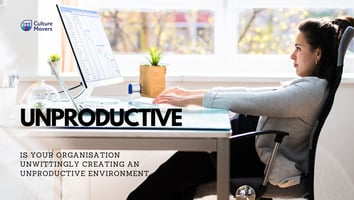Arriving on time, leaving late, being busy....Productive traits? Maybe not....
Leaders who enhance culture do this
 It's a nerdy afternoon for me. That means research and contemplation. When I mention research, it's the type of research that involves academic reading of peer reviewed and published articles, usually by people who have lots of letters after their names. I like to know what's happening in culture research and also how to take culture research into the realm of practical, everyday application.
It's a nerdy afternoon for me. That means research and contemplation. When I mention research, it's the type of research that involves academic reading of peer reviewed and published articles, usually by people who have lots of letters after their names. I like to know what's happening in culture research and also how to take culture research into the realm of practical, everyday application.
Often I come across a particularly good article and today was no exception. I was reading about the connection between excellent cultures and financial performance. There is so much material out there now, describing the connection between culture and the bottom line. This article really caught my attention. It's a meta-analysis of lots of other research, combined into one article. For the reference, it'll be at the end of the blog post if you want to read it yourself. There was a paragraph that resonated. 'Other studies on excellent cultures reveal a number of consistent characteristics that leaders need to pay attention to and develop. The best cultures are typically characterized by:
(1) valuing all people at all levels;
(2) making it safe for people to be open and candid without fear of retribution;
(3) engaging and involving employees'
By focusing on these three things, leaders can make huge steps towards creating strong and excellent organisational cultures. There are other steps in the article, that I'll write about another time (or read the article for yourself).
So let's unpick these three things. Valuing people at all levels. As a leader, what could you focus on to value people at all levels? You might think about your organisational structure - is it overly hierarchical? Could you have a flatter, more modern structure that supports your Diversity, Equity and Inclusion strategy? How does your DEI strategy work in practice, are you achieving the results you want? How do you communicate information and who's the first to find out what's really going on? Who gets rewarded and what for? Do you pick out 'stars' or do you reward cross organisational team work? These questions are to get you thinking about valuing all people at all levels. You might think your organisation already does this, but does it?
Making it safe for people to be open and candid without fear of retribution. Read about psychological safety and in particular, the work of Amy Edmondson. Her groundbreaking book on how organisations can create a culture where it's safe to speak up, is excellent. It'll give you lots of ideas about what you can do in this space. Having a workplace where people can be open and candid without fear of retribution leads to improvements in problem solving, people speak up about things that don't work or are potentially dangerous. There's more creativity and learning. Having a psychologically safe workplace just makes sense.
Engaging and involving employees. Feel like all this work is just too much for yourself or the leadership team to handle? Engage your employees in the journey. They want a workplace that has these three characteristics. They want to thrive as much as you want your organisation to thrive - the two are inseparable. Find the natural, positive energy in your workplace and start to build a culture change.
For those of you who want to know more, get in touch with us.
References:
Leaders build cultures: Action steps for leaders to build successful organizational cultures by D D Warwick and D G Gardner, University of Colorado, Colorado Springs, in the Journal of Leadership Accountability and Ethics Vol. 18(1) 2021.
The Fearless Organization: Creating Psychological Safety in the Workplace for Learning, Innovation, and Growth. By Amy C. Edmondson, 2018.
.png?width=1077&height=518&name=Culture%20Movers%20logo%20lscape%20(1).png)


